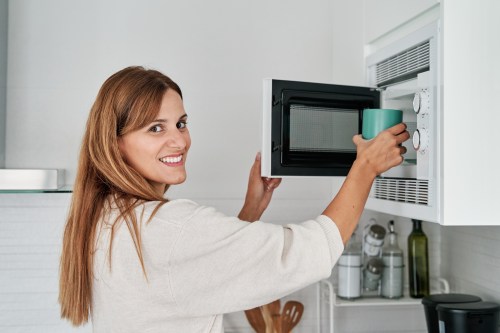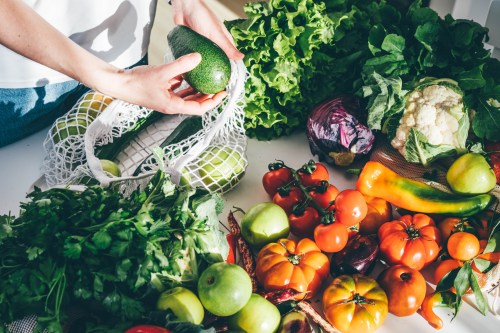I Was Today Years Old When I Learned That Light Roast Coffee Has More Caffeine *and* Acid Than Dark Roast
Learn how to tell the difference between coffee roast levels and how roasters achieve these levels, according to a coffee expert.

When it comes to coffee, it’s safe to say that most of us know that there are three main types of roasts: light, medium, and dark. But aside from the differences in their physical appearance, there are several additional factors that distinguish roasts from one another, like smell and flavor.
Experts in This Article
coffee expert and Q grader
To learn more about what happens behind the scenes with coffee roast levels—from when harvested coffee beans make it to a roastery to when they become a blissful cup of cold brew—we caught up with Maciej Kasperowicz, a Q grader, coffee expert, and the director of coffee at Trade Coffee, a subscription coffee company connecting small roasters across the United States to coffee lovers. He shared more about the critical role roasters play in determining the roast levels of coffee beans and how each is uniquely delicious.
How coffee beans are roasted at a roastery
According to Kasperowicz, a roaster’s top priority is to ensure that freshly-harvested coffee beans are perfectly roasted by completing a set of very meticulous steps. “When coffee arrives at a roastery, it’s a dried, green seed, and it’s basically the roaster’s job to turn that seed brown,” Kasperowicz says. “While doing so, the roaster makes that seed more brittle so we can grind and brew it and drastically change its flavor from something that smells like grass or bad green tea to something that tastes like, well, coffee.”
To roast the beans, roasters rely on specialty equipment to carefully heat the coffee. “They drop coffee into a big machine that applies heat. Most of the roasting machines used in specialty coffee work one of two ways: They either use a hot rotating drum that spins like a solid, cast-iron clothes dryer, or they use a chamber of extremely hot air—like a very extreme convection oven,” Kasperowicz says. He notes that the two most important key variables to control—that will ultimately determine the particular taste the coffee beans will produce—are temperature and time.
What exactly does coffee “roast” mean, though?
By controlling the two key factors during roasting—temperature and time—a roaster can alter the way the coffee produced from those beans will taste, smell, and more. “In the most basic sense, the roast level is just how dark the roaster turns a coffee. There are many different combinations of time and temperature that a roaster can use to get to that color, and those choices will heavily affect flavor, texture, and aroma, but roast level really just means roast color,” Kasperowicz says.
According to Kasperowicz, one key way to define the roast type is by its color. “If you see a coffee bean that’s anything close to tan, that’s definitely a light roast. If you see a coffee that verges on blackened, that’s a dark roast, and there are many degrees of a medium roast in between, often in the eye of the beholder,” he says. Since the color scale can often be subjective, Kasperowicz says it’s important to share a key benchmark so customers can determine what a roast level really means based on a specific roaster’s perspective. “One of the most important things I do when evaluating coffee at Trade is to assign coffee roast levels on the scale of all the coffees on our website; you’d be surprised how often what one roaster would call a roast dark while another would call it medium,” he says.
“If you see a coffee bean that’s anything close to tan, that’s definitely a light roast. If you see a coffee that verges on blackened, that’s a dark roast, and there are many degrees of a medium roast in between, often in the eye of the beholder.”
How different roast levels affect how coffee tastes
There are many factors that play into how coffee will taste depending on the roast level—but there are some general rules of thumb to help predict the final outcome. “The roast level is actually pretty intuitive if you look at the beans. Lighter roasts are often more delicate. Medium roasts start bringing on those caramel flavors, which makes sense, as caramelization and Maillard reactions—just like in any other kind of cooking—are actually what’s happening,” Kasperowicz says.
This also means that the darker the roast, the stronger the flavor. “Dark roasts can taste kind of charred and smoky because fibers in the coffee are actually getting charred. If you like those charred flavors, and many people do, dark roasts are for you,” Kasperowicz says. On the flip side, the lighter the coffee bean, the more acidic it’ll be since it’s been roasted for the shortest amount of time. Meanwhile, medium roasts will like taste more chocolatey—which is Kasperowicz’s recommended first choice if you’re looking for a place to start your coffee-loving journey.
The lighter the coffee bean, the more acidic it’ll be since it’s been roasted for the shortest amount of time.
“If you don’t know where to start, medium roasts are probably the place to go. They’re, in many cases, less acidic than a similar coffee roasted light, but they don’t have the charred bitterness you’d find in a dark roast,” Kasperowicz says. “They’re also probably the most versatile in terms of how easy it is to brew them—whether you’re using a drip machine, cold brew, or espresso,” he says. That said, regardless of the brewing method, Kasperowicz notes that the roast will have the biggest impact on the final result, contrary to popular belief.
“I do personally think, however, that the kind of coffee you enjoy is more important than the brew method you’re using. I’ve had some incredible light roast espressos, for example, and if you really want dark, smoky flavors, you’ll probably want to stick with dark roast whether you’re brewing a pour-over or a French press,” Kasperowicz says. For context, espressos are traditionally made with medium or dark roasts. Meanwhile, light roasts are typically brewed for pour-overs. (Although a French press can be paired with any of the three types of roasts, depending on who you ask.)
The secret to making the perfect creamy dairy-free coffee:
Sign Up for Our Daily Newsletter
Get all the latest in wellness, trends, food, fitness, beauty, and more delivered right to your inbox.
Got it, you've been added to our email list.










